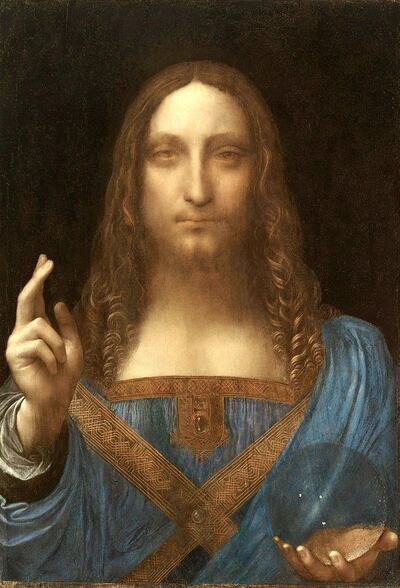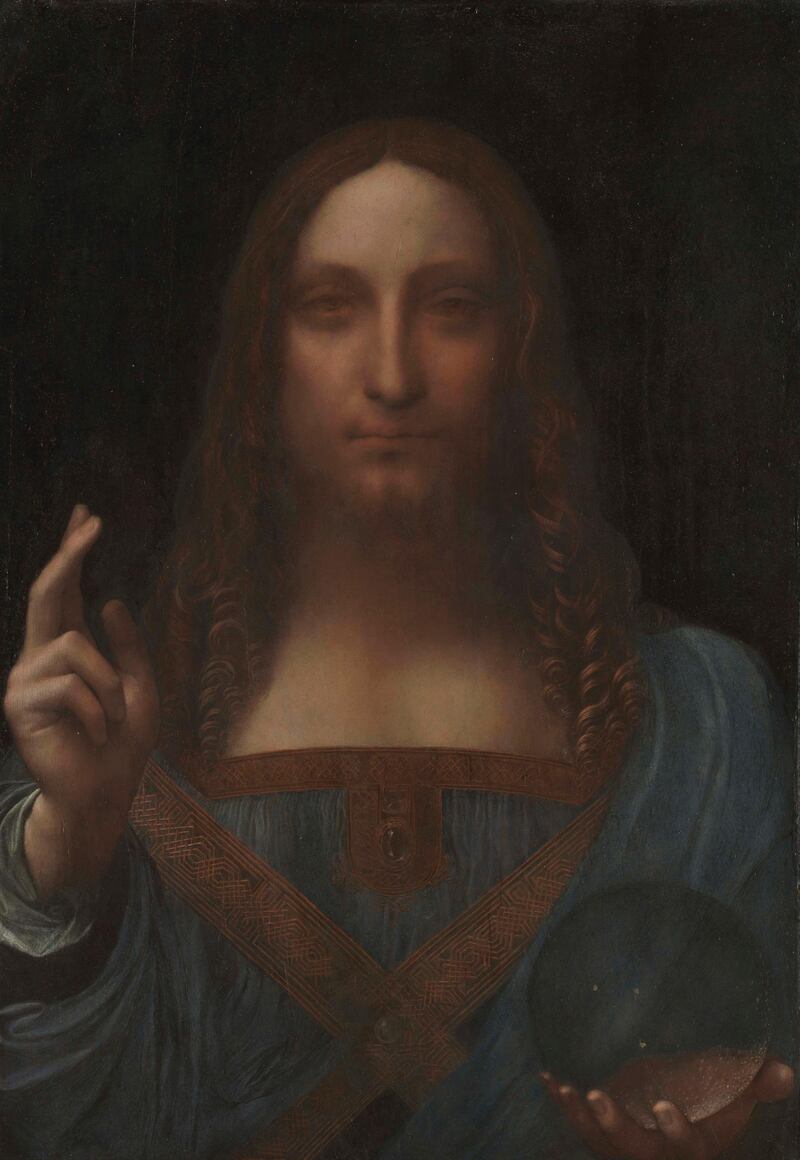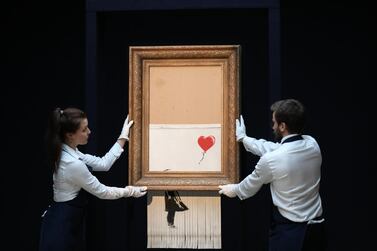There are several mysteries surrounding Leonardo da Vinci's elusive Salvator Mundi – and computer scientists in the US may have just solved one of them. Specifically, the mystery of the ethereal, clear orb held by the painting's Christ figure.
Considered an original Leonardo by a number of scholars, the Salvator Mundi became the world's most expensive painting after it was bought for $450.3 million (Dh1.65bn) at a Christie's auction. The orb, which symbolises the world and relates to the painting's title, is a key component of the work.
In their paper, Marco Zhanhang Liang, Michael T Goodrich and Shuang Zhao from the University of California, Irvine, claim that the orb in the painting is an accurate and realistic depiction of a hollow glass object.
The scientists studied the optical accuracy of the orb through a combination of “physically based rendering”, a computer graphics tool that can simulate light in virtual scenes, and 3D modelling.
Why is such a finding important? The orb has been a touchstone for scholars with regard to the authenticity of the painting. If the orb were a solid mass, then it would produce inverted reflections and distortions of the objects around it, including the figure of Christ. Given Leonardo’s deep interest in optic studies at the time the work was produced, why would he decide to render these distortions incorrectly? Such questions have led people like ArtWatch UK director Michael Daley to cast doubt on the painting’s true creator.
Others, including a Christie’s spokesperson, have purported that Leonardo deliberately painted it in this manner because “it would be too distracting to the subject of the painting” otherwise.
With this new research, Liang, Goodrich and Zhao claim that Leonardo’s depiction would have been physically possible in the real world given that the orb were made of thin glass.
Through their 3D modelling, they calculated the orb’s measurements, suggesting that it would have been 1.3 millimetres thick with a radius of 6.8 centimetres. “Our experiments show that an optically accurate rendering qualitatively matching that of the painting is indeed possible using materials, light sources, and scientific knowledge available to Leonardo da Vinci circa 1500,” the scientists wrote in the paper, which is yet to be published in a peer-reviewed journal.
This also suggests that da Vinci would have applied his knowledge of optics to render the object realistically.

Not everyone is convinced by these findings, however. Though Leonardo scholar Martin Kemp has stated he believes in the painting's authenticity, he told Live Science that "the paper of the sphere is just one of many examples of scientists making ill-judged interventions in Leonardo studies based on ignorance of the sources".
For Kemp, the artist would not have necessarily tried to copy reality, as he has taken creative license with scale in previous works, such as his Madonna and child paintings. He believes that Leonardo would have instead chosen to tweak reality for the sake of a more aesthetically pleasing composition.







